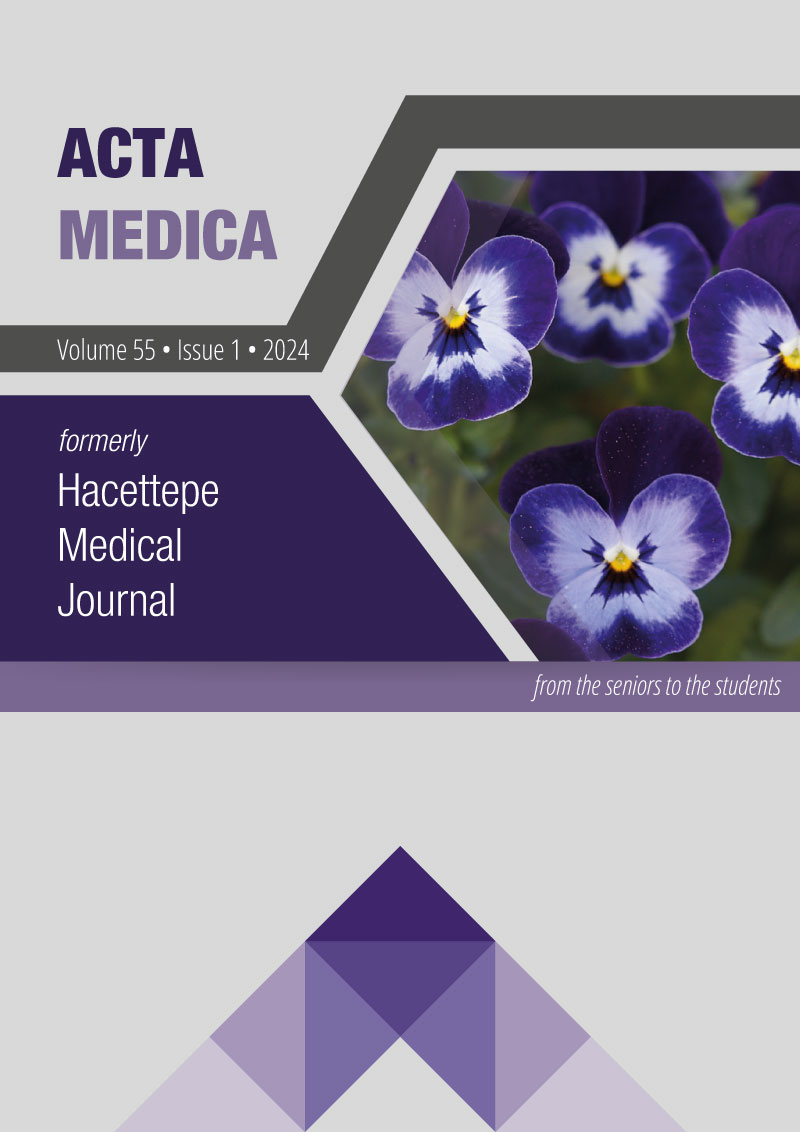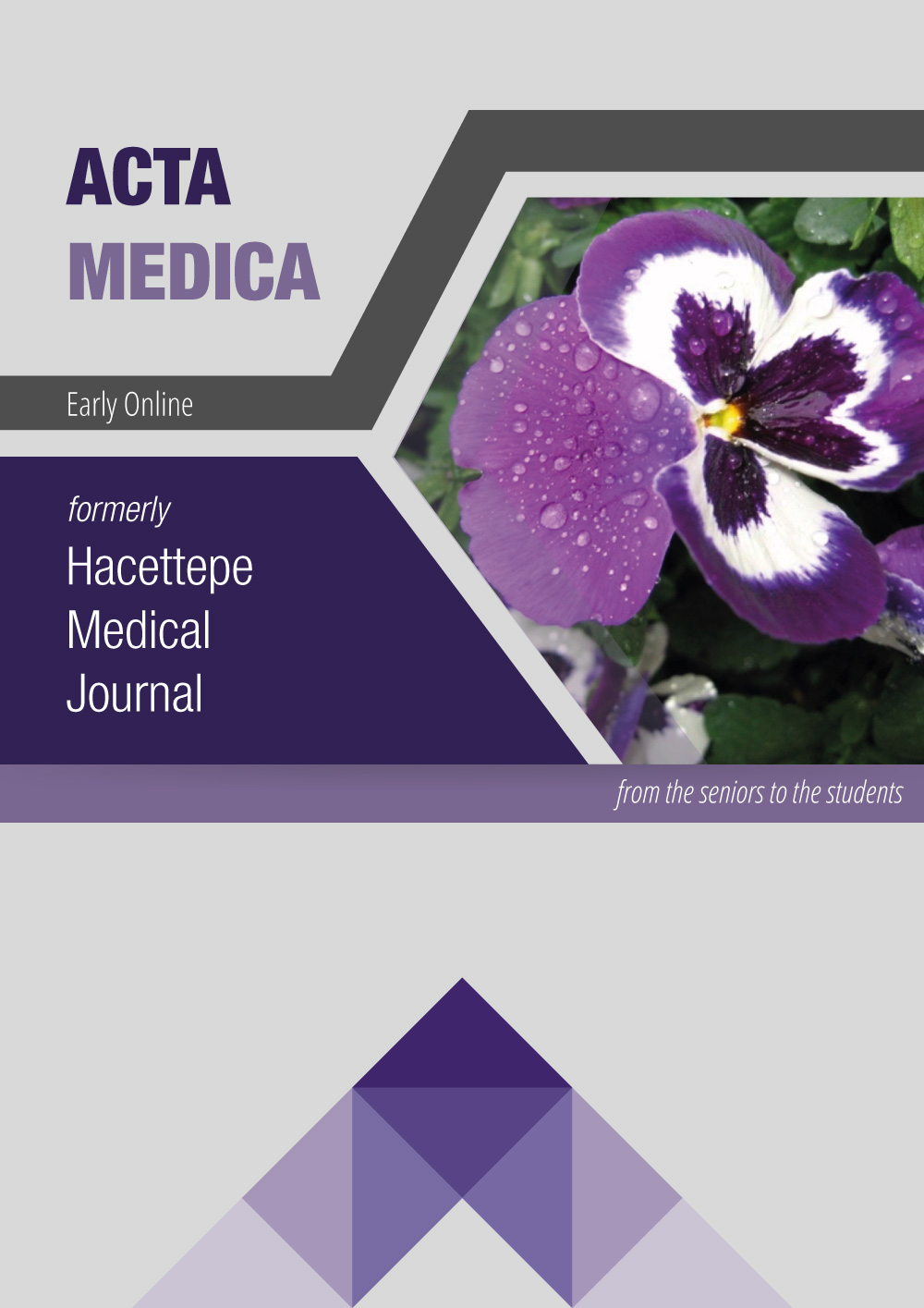The role of PEDF, VEGF, and Ki-67 in tissue invasion and tumor angiogenesis of medullary thyroid carcinoma
DOI:
https://doi.org/10.32552/2023.ActaMedica.974Keywords:
Medullary thyroid carcinoma (MTC), Pigment epithelium-derived factor (PEDF), Vascular endothelial growth factor (VEGF), Nuclear factor kappa B (NF-kB), Ki-67 proliferation index, Microvessel density (MVD), angiogenesis, invasionAbstract
Objective: This study investigated the role of pigment epithelium-derived factor (PEDF), vascular endothelial growth factor (VEGF), nuclear factor kappa B (NF-kB), and Ki-67 proliferation index (PI) factors in Medullary thyroid carcinoma (MTC) tissue progression and their relationship with tumor angiogenesis. Immunohistochemical (IHC) analyses of PEDF expression in various human tumor samples and healthy tissues have shown that high levels of PEDF expression are associated with a positive prognosis, and low levels of PEDF suggest a poorer prognosis. With the completion of further studies showing the antitumor effects of PEDF on different types of cancer, PEDF’s potential as a therapeutic agent has become increasingly promising. To the best of our knowledge, the role of PEDF in tumor angiogenesis in MTC has not been previously investigated.
Material and Methods: Thirty-seven tissue samples were retrospectively analyzed and sent/removed for pathology after total or subtotal thyroidectomy and archived between 01.01.2000 and 31.12.2015 in the Pathology Department of Hacettepe University. Relationships between categorical variables are analyzed using Pearson Chi-squared or Fisher’s Exact tests.The correlation between two numerical variables is analyzed using Spearman’s Rho correlation coefficient, and a comparison of numerical variables between two groups is made using the Mann-Whitney U test.
Results: The clinicopathological features of the patients were evaluated as sporadic or hereditary, tumor node metastasis (TNM) staging, single or multifocal focus, recurrence or regional or distant metastasis, progression-free survival time (PFS), and appropriate pathology tissue samples were determined as PEDF, VEGF, NF-kB, Ki-67 staining was compared. As a result of this comparison, a moderate negative correlation was found between VEGF expression level and PFS (rho = - 0,407, p = 0,019). No statistically significant correlation was found between single or multifocal groups and Ki-67 proliferation index (PI) expression levels (p = 0.070), but this is a small p value, a variable that is likely to find significant differences in studies with larger sample groups.The relationship between PEDF, VEGF, NF- kB, Ki-67 PI factors and tumor angiogenesis as reflected by microvessel density (MVD) was also investigated. To this end, we correlated the expression levels of PEDF, VEGF, NF-kB, and Ki-67 staining of suitable pathology tissue samples of the patients with the results obtained from the staining with CD 31. As a result of this comparison, no statistically significant relationship was found.
Conclusions: We demonstrated and described for the first time PEDF expression patterns in MTC tumor tissues. A direct relationship between PEDF expression level and angiogenesis, angiogenetic and clinicopathological factors does not seem to exist, at least as it pertains to the group studied. Further studies are required to fully elucidate mechanisms for tumor angiogenesis and invasion in MTC.
Downloads
Downloads
Published
How to Cite
Issue
Section
License
Copyright (c) 2023 Acta Medica

This work is licensed under a Creative Commons Attribution-NonCommercial-NoDerivatives 4.0 International License.


